 |
 |
 |
| |
Bone mineral density screening in veterans living with HIV : Only One Quarter of US HIV+ Veterans Group Screened for Low BMD
|
| |
| |
IDWeek 2020, October 22-25, 2020
Mark Mascolini
Only 23% of a group of US veterans with HIV received guideline-suggested screening for low bone mineral density (BMD), and almost half of those screened had low BMD [1]. In contrast, 80% of these veterans got screened for vitamin D deficiency.
People with HIV infection tend to have lower BMD than the general population. One meta-analysis estimated more than 3-fold higher osteoporosis prevalence in people with than without HIV [2]. Despite this high risk, consensus on when to screen people with HIV for low BMD remains elusive. For people with HIV, the Infectious Diseases Society of America (IDSA) believes it is "reasonable" to assess BMD by DXA scans in all men 50 or older, premenopausal women or men aged 40 to 49 with intermediate or high risk, and postmenopausal women [3].
Researchers at Houston's Baylor College and other centers conducted this study to see how well clinicians caring for HIV-positive veterans follow IDSA BMD screening guidelines. Study participants received care at the Michael E. DeBakey Veterans Affairs Medical Center from January 2014 through December 2018.
The study group included 1243 veterans, 346 of whom turned 50 from 2009 through 2018. Only 78 of those 346 (23%) had DXA screening within 5 years of turning 50. Of the 78 screened veterans, 42 (53.8%) had normal BMD and 36 (46.2%) had osteopenia or osteoporosis.
Comparing the 42 veterans with normal BMD (39 men, 3 women) with the 36 who had osteopenia or osteoporosis (33 men, 3 women), the researchers found no difference by race (black, white, other; P = 0.48) or by body mass index category (underweight and normal vs overweight and obese; P = 0.11). But average body mass index was higher in the normal BMD group than in those with low BMD (30.16 vs 26.78 kg/m2, P = 0.01). The normal-BMD group did not differ from the low-BMD group by history of alcohol abuse or tobacco abuse, history of chronic kidney disease, more than 6 months of steroid therapy, or exposure to nucleosides/nucleotides, nonnucleosides, or protease inhibitors.
Among the 1243 veterans seen in 2014-2018, 993 (80%) got screened for vitamin D deficiency. Almost half (45.6%) had 25-OH D levels at least 30 ng/mL, 30.8% had between 20 and 30 ng/mL, and 23.6% had a reading below 20 ng/mL. Vitamin D status did not differ significantly between the 42 veterans with normal BMD and the 36 with low BMD.
Neither CD4 count nor viral load when entering Veterans Affairs care differed significantly between the 42 veterans with normal BMD and the 36 with osteopenia or osteoporosis. Nor did initial CD4 count differ between 453 veterans with 25-OH D above 30 ng/mL and 235 veterans below 20 ng/mL. But average viral load when starting VA care was significantly higher in the below-20 ng/mL group than in the above-30 ng/mL group (93,041 vs 25,937, P = 0.04).
The researchers concluded that adherence to IDSA advice on BMD screening can be improved in veterans with HIV. In contrast, 80% of veterans in this study got screened for vitamin D deficiency (a much easier and cheaper test than a DXA scan). The authors endorse "efforts to increase awareness and screening" of low BMD in veterans.
Little published work addresses rates of BMD screening in other HIV populations. One study of HIV-positive people seen at a sexual health clinic in Australia found that 149 of 243 (61%) met criteria for BMD assessment, and 93 of those 149 (62%) did get screened [4], a much higher rate than in the veterans study.
References
1. Khanjee N, Turin CG, Breaux K, Armamento-Villareal R, Rodriguez-Barradas MC, Clark E. Bone mineral density screening in veterans living with HIV. IDWeek 2020, October 22-25, 2020. Abstract 110.
2. Brown TT, Qaqish RB. Antiretroviral therapy and the prevalence of osteopenia and osteoporosis: a meta-analytic review. AIDS. 2006;20:2165-2174. doi: 10.1097/QAD.0b013e32801022eb.
3. Brown TT, Hoy J, Borderi M, et al. Recommendations for evaluation and management of bone disease in HIV. Clin Infect Dis. 2015;60:1242-1251. https://doi.org/10.1093/cid/civ010.
4. Davidson N, Sowden D. Evaluation of screening practices for low bone mass and prevalence of osteoporosis and fractures in people living with human immunodeficiency virus attending a sexual health clinic. Intern Med J. 2019;49:1119-1124. doi: 10.1111/imj.14357.
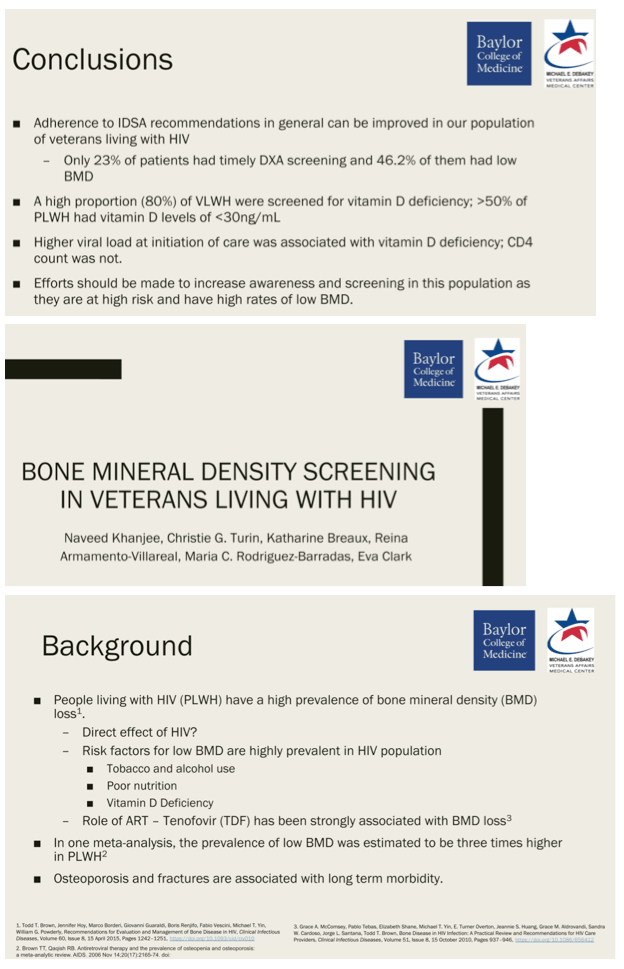
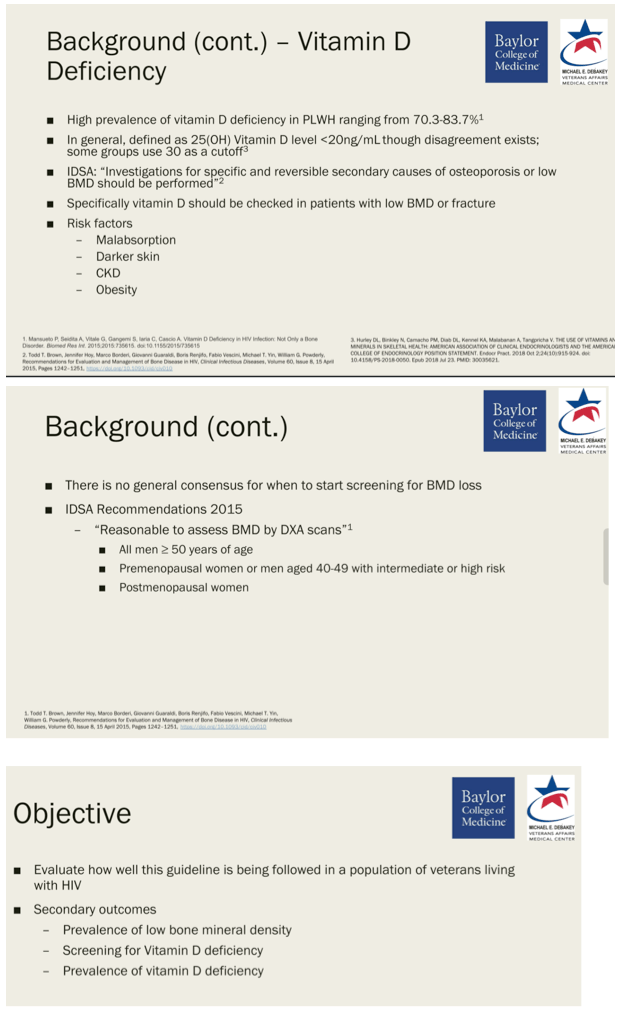

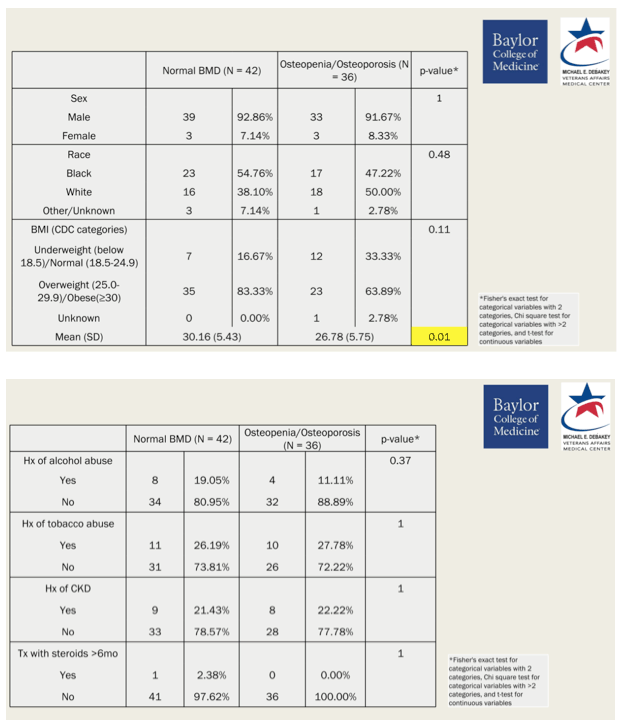
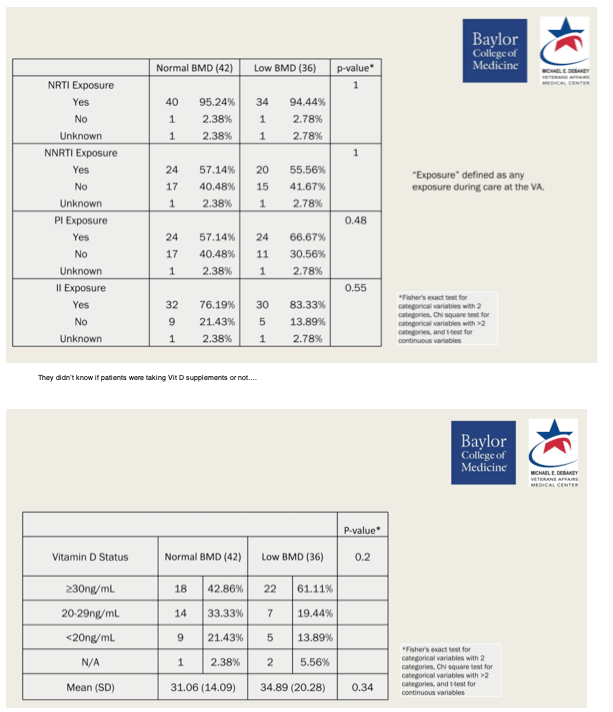
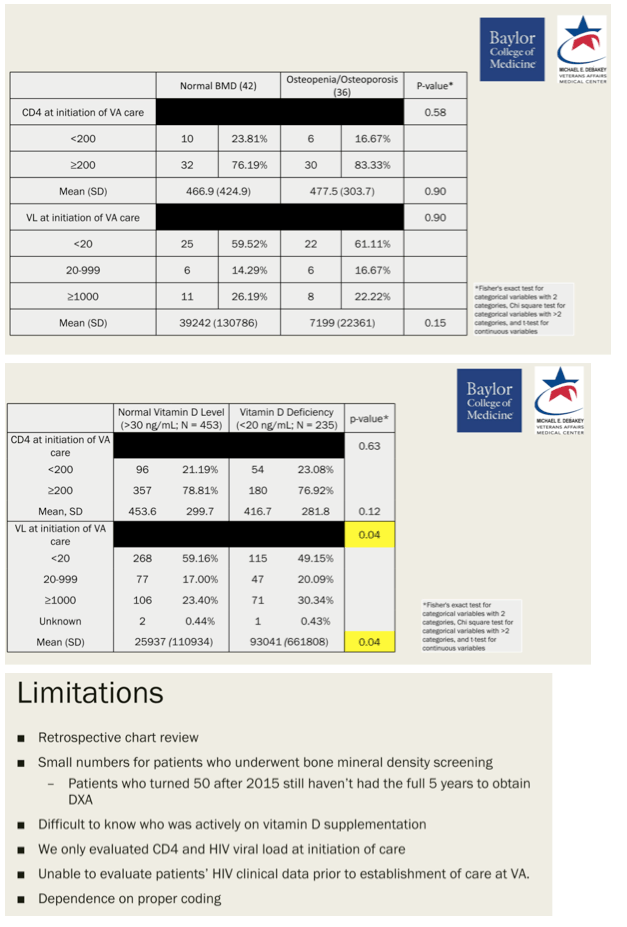
|
| |
|
 |
 |
|
|